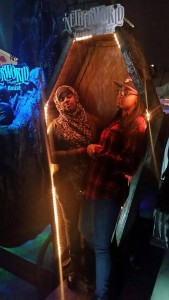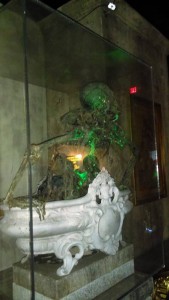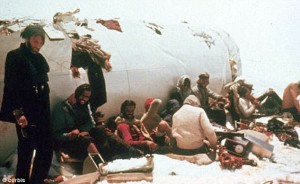Last weekend, a friend and I went to the Netherword Haunted House event on Halloween. We went around 6pm, in hopes of avoiding large lines, but we still waited 40 minutes before entering the house. Some people were in costumes and most, like myself, were in casual attire with a terrified facial expression. It was my first and last time going inside a haunted house.
In class we’ve discussed how funerary practices and mortuary services often require some financial contribution, which supports the idea that associating with the dead creates a profit. In regards to Halloween, stores are able to raise their prices of candy, costumes, and pumpkins, which further commercialize the holiday. According to various pieces of literature, Halloween is believed to be a time where the veil between the living and the dead is lifted. But the holiday can easily be associated with the fall season. Which is marked by the end of the harvest, leaves falling, and animals entering a state of hibernation, as we approach the “dead” of winter.
Halloween serves as a holiday influenced by the event of death itself. Throughout the haunted house, there were many images and props of the “living dead.” There were also individuals in each corner wearing some form of costume that represented zombies and famous killers such as Michael Myers. I found it interesting how relaxed people seemed to be with such gruesome images of the dead. I was somewhat uncomfortable throughout the entire time, especially when I stepped inside the fake coffin. I felt as if I was mocking the dead.
Is it ethical to make money off the dead and their image?
http://edsitement.neh.gov/feature/origins-halloween-and-day-dead



